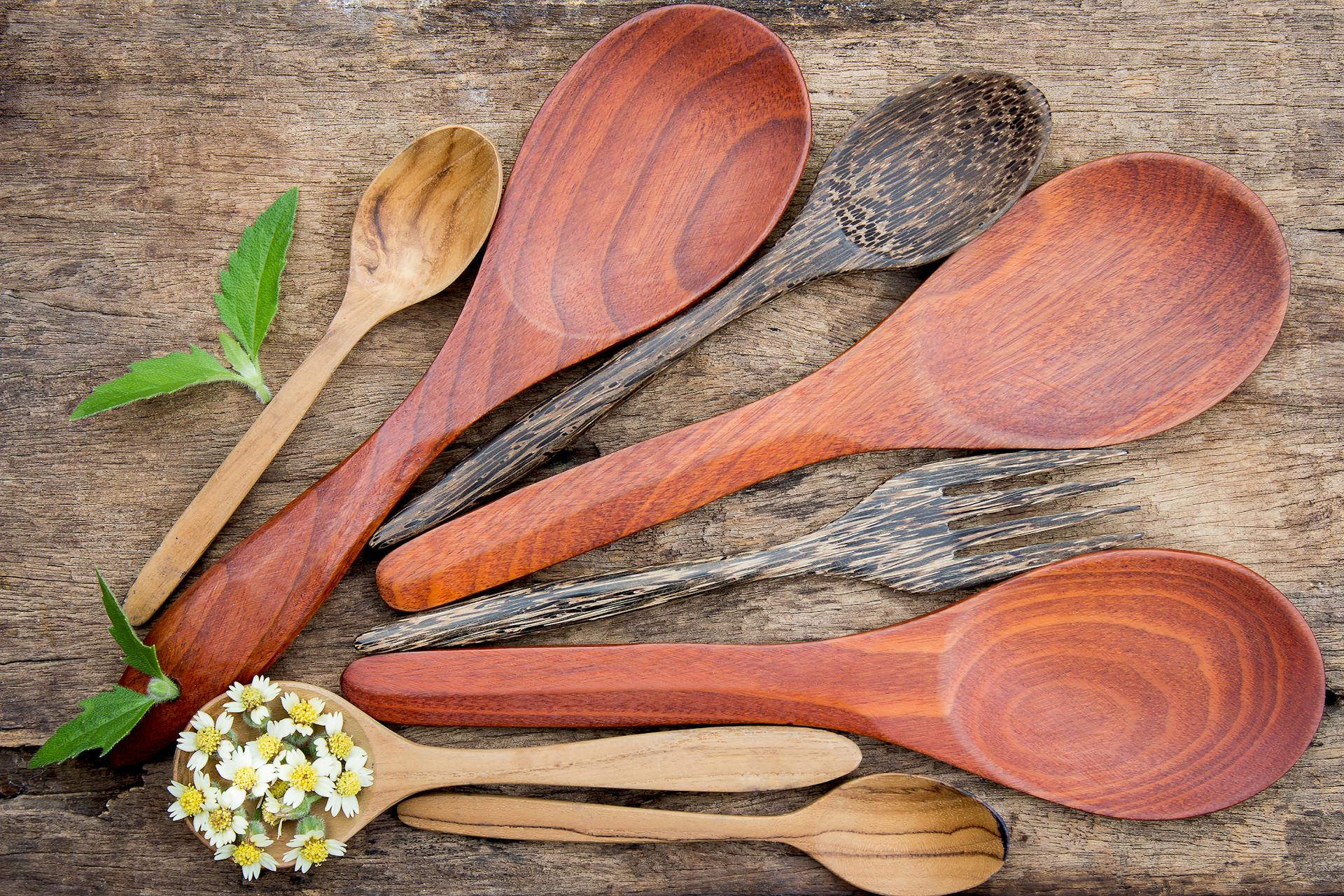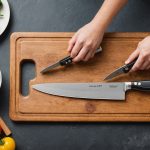Cooking can be a joyful experience, but for those with arthritis, it often presents challenges. Thankfully, ergonomic kitchen tools specifically designed to ease strain can transform meal preparation. These tools enhance comfort and functionality, allowing you to enjoy cooking again. In the UK, a range of arthritis-friendly products is available, making it easier to whip up your favourite dishes. Discover how these innovative solutions can improve your culinary experience while minimizing pain and discomfort.
Overview of Arthritis and Cooking Challenges
Understanding the intersection of arthritis and cooking is crucial for those affected. This condition can significantly impact daily activities, including meal preparation. There are various types of arthritis, such as osteoarthritis and rheumatoid arthritis, each presenting unique challenges in the kitchen.
In the same genre : Top Strategies for Effective Humidity Management in UK Kitchen Pantries”
Arthritis cooking challenges often involve difficulty with gripping, twisting, and applying pressure. Tasks like chopping vegetables or opening jars can become daunting. The pain and stiffness associated with arthritis can lead to fatigue, making cooking a strenuous task.
Importance of Ergonomic Kitchen Tools
Adapting the kitchen environment can alleviate some of these difficulties.
This might interest you : Stylish Strategies for Seamlessly Incorporating a Wine Cooler into Your UK Kitchen Design
- Ergonomic kitchen tools are designed to reduce strain and improve comfort for arthritis sufferers.
- Tools with larger, cushioned handles can ease the strain on joints.
- Devices like electric can openers or jar openers minimize the need for twisting motions.
These adaptations not only make cooking more accessible but also empower individuals to maintain their independence and enjoy the culinary process. By integrating these tools, those with arthritis can overcome many of the daily challenges faced in the kitchen, enhancing their quality of life.
Essential Ergonomic Kitchen Tools
Enhancing comfort and efficiency in the kitchen.
Overview of Essential Ergonomic Kitchen Tools
Ergonomic kitchen tools are crucial for those with arthritis, offering comfort and reducing strain. These arthritis-friendly utensils are designed with specific features to assist in everyday cooking tasks. For instance, tools with non-slip grips and larger handles are easier to hold, minimizing joint stress.
Features That Make Tools Arthritis-Friendly
Adaptive cooking tools often have specific characteristics that cater to arthritis sufferers. Key features include:
- Larger, cushioned handles for better grip
- Lightweight materials to reduce hand fatigue
- Non-slip surfaces to prevent slipping
These attributes make it easier to perform tasks like chopping, stirring, and mixing, enhancing the cooking experience for those with arthritis.
Examples of Adaptive Tools for Specific Cooking Tasks
Several adaptive cooking tools are designed for specific kitchen tasks:
- Electric can openers: Reduce the need for twisting
- Jar openers: Provide leverage, easing jar opening
- Rocking knives: Allow for smooth cutting motions
By incorporating these tools, individuals can maintain independence and enjoy cooking with less discomfort, making daily life more manageable.
Recommended Arthritis-Friendly Kitchen Tools in the UK
Exploring suitable kitchen tools can enhance the cooking experience for arthritis sufferers.
Utensils
Utensils designed for arthritis can significantly ease kitchen tasks. Consider the following arthritis-friendly products:
- Ergonomic Peelers: These have larger handles and require minimal effort, reducing strain on joints.
- Weighted Utensils: Provide stability and reduce hand tremors, making them ideal for those with arthritis.
- Easy-Grip Knives: Feature non-slip grips and balanced weight distribution, aiding in safe and comfortable cutting.
User reviews often highlight the enhanced comfort these tools bring. One user mentioned, “These products have transformed my cooking experience, making it enjoyable again.”
Appliances
Appliances tailored for arthritis sufferers can simplify meal preparation. The best kitchen tools for arthritis include:
- Electric Can Openers: Effortlessly open cans without twisting.
- Stand Mixers: Minimize manual stirring, reducing hand fatigue.
- Food Processors: Chop and blend ingredients with ease, saving time and effort.
Feedback emphasizes the convenience and ergonomic features, with users praising their ability to cook independently.
Gadgets
Gadgets with ergonomic designs offer practical solutions. Notable UK kitchen tools include:
- Jar Openers: Provide leverage for easy opening.
- Rocking Knives: Enable smooth cutting motions.
- Non-Slip Cutting Boards: Ensure stability during food preparation.
These arthritis-friendly products are available at various UK retailers, offering accessibility and improved kitchen experiences.
Tips for Smoother Cooking with Arthritis
Enhancing your culinary experience with practical strategies.
Practical Cooking Tips to Reduce Strain
Implementing adaptive cooking strategies can significantly alleviate the challenges faced in the kitchen. Prioritize tasks that minimize joint stress by using ergonomic kitchen tools. For instance, opt for pre-chopped vegetables to reduce chopping effort.
Consider organizing your workspace to keep frequently used items within easy reach, minimizing unnecessary movement. Use lightweight cookware to reduce hand fatigue and ensure stability with non-slip surfaces.
Adaptive Cooking Strategies for Arthritis
Arthritis management in the kitchen involves thoughtful preparation. Plan meals in advance to streamline cooking processes and reduce time spent standing. Break tasks into smaller steps, allowing for rest periods to manage fatigue effectively.
Incorporate adaptive techniques like using a rocking knife for cutting, which requires less pressure and motion. Embrace electric appliances that automate repetitive tasks, conserving energy and reducing strain.
Importance of Organization and Preparation
A well-organized kitchen can enhance efficiency and comfort. Arrange tools and ingredients logically, creating a seamless workflow. Use labeled containers for easy identification, and ensure your kitchen layout supports mobility.
By adopting these cooking tips for arthritis, you can transform your kitchen experience, making it more enjoyable and less taxing. Implementing these strategies fosters independence and confidence in culinary activities.
User Reviews and Experiences
Insights from real-life experiences with arthritis-friendly tools.
Summary of User Reviews
User reviews of arthritis tools provide invaluable insights into their effectiveness. Customers often praise products for their ability to ease kitchen tasks. For instance, many users highlight the comfort provided by ergonomic kitchen tools. One user noted, “The larger handles on my utensils have made cooking enjoyable again.” Such customer feedback is crucial in understanding the real-world benefits of these products.
Common Praises and Concerns
Customer feedback frequently emphasizes the practicality of these tools. Positive reviews often mention the reduction in joint strain and increased independence. However, some concerns arise regarding the durability of certain products. Users sometimes report that while the tools are initially helpful, they may wear out faster than expected. Addressing these issues is essential for manufacturers to enhance product longevity.
Importance of User Feedback in Product Selection
Real-life experiences shared in user reviews are instrumental in guiding others in their purchasing decisions. They offer a realistic perspective on the usability and effectiveness of arthritis tools. By considering this feedback, potential buyers can make informed choices, ensuring they select products that best meet their needs and improve their cooking experience.
Safety and Accessibility Considerations
Enhancing kitchen safety and accessibility for arthritis sufferers.
Safety Tips for Individuals with Arthritis
Kitchen safety for arthritis is paramount to prevent accidents and injuries. Implementing simple safety tips can make a significant difference:
- Use non-slip mats to prevent falls.
- Ensure adequate lighting to enhance visibility.
- Keep frequently used items within easy reach to avoid overexertion.
These strategies help create a safer cooking environment.
Importance of Accessibility in Kitchen Design
Designing an accessible cooking space is crucial for those with arthritis. Features like adjustable-height countertops and pull-out shelves can enhance usability. Install lever-style faucets and easy-to-grip cabinet handles to accommodate limited hand mobility. This focus on accessibility ensures comfort and independence in the kitchen.
Recommendations for Creating an Arthritis-Friendly Cooking Space
Creating an arthritis-friendly kitchen involves thoughtful design and tool selection. Consider the following recommendations:
- Opt for lightweight cookware to reduce strain.
- Arrange the kitchen layout to minimize movement.
- Utilize accessible cooking tools with ergonomic designs.
By integrating these elements, individuals can enjoy a more manageable and enjoyable cooking experience, promoting safety and accessibility. These considerations not only improve functionality but also empower those with arthritis to maintain their culinary independence.
Resources and Further Reading
Discover valuable support and knowledge.
Organizations and Websites for Arthritis Support
For individuals seeking arthritis resources, numerous organizations offer valuable support. The Arthritis Foundation provides comprehensive information on managing arthritis, including cooking tips. Versus Arthritis is another key resource, offering guidance and community support for those affected.
Suggested Reading Materials on Cooking and Arthritis
To enhance your understanding of cooking resources for arthritis sufferers, consider these suggested readings:
- “Cooking Well: Arthritis” by Marie-Annick Courtier
- “The Complete Anti-Inflammatory Diet for Beginners” by Dorothy Calimeris
These books offer practical advice and recipes tailored to those managing arthritis, providing both nutritional guidance and cooking techniques.
Additional Resources for Adaptive Tools and Techniques
Exploring support for arthritis in the kitchen can significantly improve daily life. Adaptive tools and techniques are essential for maintaining independence. Consider resources that focus on ergonomic kitchen tools and adaptive strategies.
- Ergonomic Kitchen Tools: Explore guides on selecting the best tools for arthritis sufferers.
- Adaptive Cooking Techniques: Learn methods to reduce strain and enhance efficiency.
By utilizing these resources, individuals can empower themselves with knowledge and tools to manage arthritis effectively in their culinary endeavors.
Conclusion and Next Steps
Enhancing your kitchen experience with arthritis-friendly strategies.
Recap of Key Points
Reflecting on our discussions, cooking with arthritis can be significantly improved by integrating ergonomic solutions. The emphasis on ergonomic kitchen tools is crucial, as they help reduce joint strain and enhance comfort. By adopting adaptive cooking strategies, individuals can maintain their independence and enjoy the culinary process with less discomfort.
Encouragement to Explore Recommended Tools
Embrace the journey of creating an arthritis-friendly kitchen. Consider the benefits of arthritis-friendly utensils and appliances, which can transform your cooking experience. These tools not only offer practical solutions but also empower you to continue enjoying cooking. Exploring these options can lead to a more manageable and enjoyable kitchen environment.
Call to Action
We invite you to share your experiences and tips for cooking with arthritis. Your insights can provide valuable support to others facing similar challenges. Consider the following action plan to enhance your kitchen:
- Evaluate current kitchen tools and identify areas for improvement.
- Research and invest in recommended ergonomic products.
- Share your journey and learnings with the arthritis community.
By taking these steps, you contribute to a collective effort in improving the quality of life for individuals living with arthritis.












